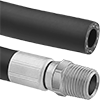Filter by
For Use With
OD
Window Diameter
Maximum Temperature
Maximum Pressure @ Temperature
Thread Type
Fitting Connection
Diameter
ID
Body Material
Thread Size
Minimum Temperature
Export Control Classification Number (ECCN)
DFARS Specialty Metals
Fluid Handling
Raw Materials
Sealing
Containers, Storage, and Furniture

































